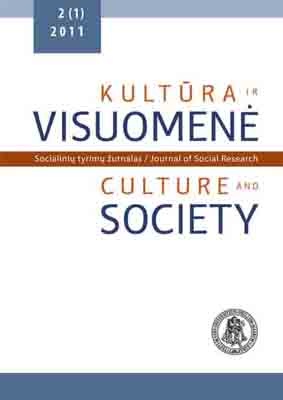Narkotikų retorikos kaita Lietuvos Respublikos Seime: atvejo tyrimas
Changes in the Rhetoric of Drugs in the Lithuanian Parliament: A Case Study
Author(s): Daumantas StumbrysSubject(s): Cultural Essay, Political Essay, Societal Essay
Published by: Vytauto Didžiojo Universitetas
Keywords: narkotikų politika; narkotikų kriminalizavimas; narkotikų retorika; narkotikų kontrolė; narkotikų prevencija; moralinė panika; Seimas; drug policy; criminalization of drugs; rhetoric of drugs; drug control; drug prevention; moral panic
Summary/Abstract: Jungtinių Tautų Narkotikų kontrolės ir nusikalstamumo prevencijos biuras, kriminologai, psichiatrai, ekonomistai narkotikų politikoje išskiria tris pagrindines kryptis: griežtos kontrolės, prevencijos, griežtos kontrolės ir prevencijos politikos derinį. Šio tyrimo tikslas – išskirti pagrindines narkotikų retorikos rūšis ir nustatyti jų kaitos tendencijas Lietuvos Respublikos Seimo (LRS) posėdžiuose 2007–2008 m. Tyrimo metu atlikta LRS posėdžių stenogramų kiekybinė ir kokybinė turinio analizė, išskirtos ir tipologizuotos dvi narkotikų retorikos rūšys: „kontrolės ir bausmės“ ir „prevencijos ir gydymo“. „Kontrolės ir bausmės“ retorikoje diskutuojama apie bausmių ir kontrolės griežtinimą, „prevencijos ir gydymo“ retorikoje – prevencinių priemonių taikymą, asmenų priklausomų nuo narkotikų gydymą ir reabilitaciją. Narkotikų retorika suklasifikuota remiantis Holiano nusikaltimų retorikos klasifikacija. Apskaičiuotas retorikos vartojimo dažnis ir nustatyta, kad jis kito šuoliais, o dominuojanti buvo „kontrolės ir bausmės“ retorika. The article identifies the main types of the rhetoric of drugs in Lithuanian Parliament in 2007–2008. It also reviews a scholarly literature and official documents on drugs policies. The review demonstrates that social scientists and the United Nations Office On Drugs distinguish three main trends in drug policy: control policy, prevention policy and policy mix (control and prevention policy). To analyze the rhetoric of drugs, B. D. H olian’s classification of crime rhetoric is used. After conducting a quantitative and qualitative content analysis of the transcripts of the Lithuanian Parliament, two types of the rhetoric of drugs were identified: control and punishment rhetoric and prevention and treatment rhetoric. The main topics of the control and punishment rhetoric were related to drug control, punishment for drug possession and war on drugs. The main topics of the prevention and treatment rhetoric included drug education and prevention programs, and treatment for the dependency on illicit drugs. The analyzed data demonstrated that the control and punishment rhetoric was dominant. The word “drugs” was found in 227 context units (the length of a context unit was 120 words). The control and punishment rhetoric was found in 218 context units, prevention and treatment rhetoric, in 166 context units.
Journal: Kultūra ir visuomenė: socialinių tyrimų žurnalas
- Issue Year: II/2011
- Issue No: 1
- Page Range: 111-120
- Page Count: 10
- Language: Lithuanian

